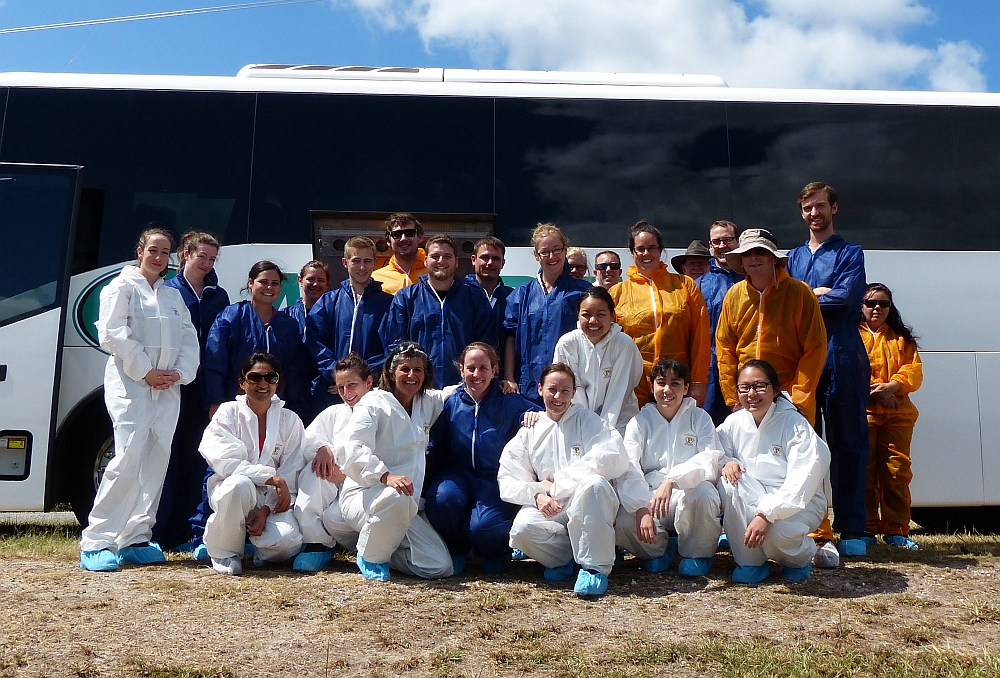CRC Program Front and Centre of Australian Government’s Industry Policy
The Cooperative Research Centres Program Review conducted by Mr David Miles AM has now been released. The report contains 18 recommendations, all of which have been accepted by the Australian Government.
From our point of view, it is a very good report. It restores industry focus, mandates management structure, streamlines selection processes and links the CRC Program with government policy. Restoring industry focus means that CRC bids that have no industry participation will be unlikely to be considered in the future.
The Review recommends that the CRC Program should put industry front and centre, the way the Poultry CRC has been operating since its inception in 2003. It articulates that CRCs should be industry-led, rather than researcher-led, to improve or develop new products, processes or services, drive emerging technologies, and exploit new national and international markets.
The Review also recommends that the priority public good funding mechanism, which has been in place since 2009, be discontinued. The Review says, “CRC Programme funding inherently delivers public good by enabling industry focused research on key issues. There is no need for a separate mechanism.”
A new feature of the Program is the introduction of CRC-Projects, or CRC-Ps. The initiative for CRC-Ps supports short term, industry-led research with a 3-year timeframe and up to a million dollars per year for funding. There is no detail available at this stage but the key is “industry-led research”, perhaps meaning projects that are nearly ready-to-transfer, rather than early-stage or blue sky ideas.
CRC-Ps will be smaller collaborations operating on short project timelines with simpler governance and administration arrangements and less funding. The process of revising the programme guidelines should establish the selection criteria and details of the CRC-P stream.
Other key recommendations relate to the alignment of new CRCs with the recently announced Industry Growth Centres, for which the Australian Government has allocated $188.5 million, as well as limiting the operating period for each future CRC to 10 years. It is still, however, early days and the implementation of the recommendations will require a massive effort both by the government and the CRC community.

In summary, the CRC Program is an envy of many and is emulated by many countries. It is the only program in Australia where collaboration between industry and research providers is encouraged and funded. The Australian government has given an incredible impetus to this program and numerous beneficial changes to the program are being canvassed by Canberra.
Mingan
For images from this weeks CRC Association conference click here.
Diana at Darwalla
Ms Diana Paez Rativa is the latest Poultry CRC internship recipient, recently commencing as Quality Project Facilitator with the Darwalla Group in Queensland. While at Darwalla, Diana will be involved in the company’s QA and Environmental projects. Diana has a background that includes a Bachelor of Applied Science (major in Agricultural and Food Science, Central Queensland University) and a Bachelor of Food Engineering (Universidad De La Salle, Bogota, Colombia).
In her new role, Diana will work alongside Darwalla’s QA Department on the implementation of the Company’s Environmental Hazard Analysis. She will be involved in developing and implementing a reporting and investigation protocol for raw material and finished feed, and assessment of finished feeds and critical raw material received at Darwalla’s Weighbridge (ensuring that they meet company standards).
Diana explains the relevance of her university studies to her internship, “In my last year of studies, I participated in a university research project exploring new and alternative fertilizers for organic farmers. The aim of the project was to determine the effects of amended chicken litter with biochar, zeolite and bentonite for crop production. During this time I developed and maintained productive partnerships with farmers, enhanced my skills as a project manager, and gained experience in data collection and analysis (e.g. using Genstat 16). I also presented results of my research in a seminar to the research group in the CQ Innovation and Research Precinct. My training provided me with both technical and liaison (people) skills that will be invaluable in my current role here at Darwalla”.
Poultry CRC wins LearnX Awards
Poultry CRC are delighted to announce that we have been successful in receiving two awards in the 2015 LearnX Impact Awards program. Our Chicken Embryo Development animation has been awarded Platinum (first prize) with our Egg Grab’n’Grade iOS game taking out Gold (second prize). Both of these awards were in the “Best eLearning Resource – School & Higher Education” category. In addition to these outstanding achievements, our recently released series of videos on Keeping Poultry in Schools was a finalist for an award.
A spokesperson for LearnX stated, “The response to this year’s awards has been fantastic, with over 200 entries of an exceptionally high standard received. We have witnessed some of the largest L & D projects ever entered into an awards program. Platinum, Gold and Silver winners will receive a trophy on stage at the Awards Presentation Ceremony on 9th September this year”.
Launched in March 2013, Egg Grab’n’Grade has been downloaded from the iTunes Store 2,870 times (as at March 2015). The Chicken Embryo Development animation has been viewed 678,316 times as of today (18/05), having been originally launched on YouTube and on our Poultry Hub site in November 2013.





